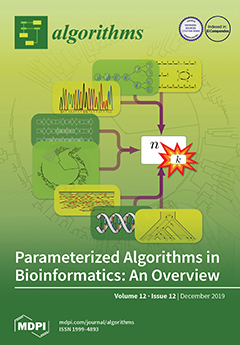Multi-Objective Problems (
MOPs) are common real-life problems that can be found in different fields, such as bioinformatics and scheduling. Pareto Optimization (
PO) is a popular method for solving
MOPs, which optimizes all objectives simultaneously. It provides an effective
[...] Read more.
Multi-Objective Problems (
MOPs) are common real-life problems that can be found in different fields, such as bioinformatics and scheduling. Pareto Optimization (
PO) is a popular method for solving
MOPs, which optimizes all objectives simultaneously. It provides an effective way to evaluate the quality of multi-objective solutions. Swarm Intelligence (
SI) methods are population-based methods that generate multiple solutions to the problem, providing
SI methods suitable for
MOP solutions.
SI methods have certain drawbacks when applied to
MOPs, such as swarm leader selection and obtaining evenly distributed solutions over solution space. Whale Optimization Algorithm (
WOA) is a recent
SI method. In this paper, we propose combining
WOA with Tabu Search (
TS) for
MOPs (
MOWOATS).
MOWOATS uses
TS to store non-dominated solutions in elite lists to guide swarm members, which overcomes the swarm leader selection problem.
MOWOATS employs crossover in both intensification and diversification phases to improve diversity of the population.
MOWOATS proposes a new diversification step to eliminate the need for local search methods.
MOWOATS has been tested over different benchmark multi-objective test functions, such as
CEC2009,
ZDT, and
DTLZ. Results present the efficiency of
MOWOATS in finding solutions near Pareto front and evenly distributed over solution space.
Full article





